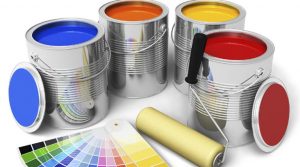
There are various painting vesicles causes that can cause blisters in your walls, Ace Painting Pros Wilmington NC explains the main causes:
Moisture blisters as a result of osmosis – Blisters occur because water (vapor) collects under the layer of paint. A blister forms due to the moisture pressure. Osmotic blisters often develop because the surface is not properly cleaned. Osmotic blisters are filled with fluid when leaking. These blisters regularly occur on metals and plastics.
Moisture blisters as a result of a wet surface – Origin when painting surfaces that are too humid. Blisters occur because water vapor from the subsurface cannot easily evaporate and vapor pressure is created under the layer of paint. The moisture pressure causes blisters. After the puncture of the blisters, the blisters are wet on the inside. These blisters only occur on wood and stone materials.
Blistering with components – Blisters on wood can also be the result of ingredients, for example, resinous woods such as pine and pine. In the case of resin passes, the volatile components can cause blisters. In case of maintenance, it is important to clear away such imperfections as far as possible and to fill them with a repair agent based on epoxy.
Blisters as a result of re-emulsification – With newly applied water-based paints, blisters may develop if the fresh paint layer is too quickly loaded with moisture. The paint layer may discolor under the influence of moisture. If the moisture load remains the same, blisters may eventually develop because the paint layer has not fully hardened. After a dry period, the blisters and also the discoloration and/or fading disappear naturally.
Heat bleaching – Blisters due to heat can, for example, be created when painting wood types with coarse pores, such as meranti. The cause is the thermal expansion of the air present in the pores. Little blisters can also appear on the spot of wormholes. If air can not escape, so gets trapped under the paint film, and that air becomes hot, it will start to expand and air bubbles will develop. Prevent painting in full sun or out of the sun. Heat-bleaching mainly occurs with dark opaque paint layers or transparent painting on dark wood.
Solvent – blisters Dense evaporating solvent in the freshly applied paint layer may cause blistering. A sealing skin is then formed on the paint surface. Due to the (solvent) vapor pressure and under the influence of heat, this will cause pressure in the paint layer, resulting in solvent blisters. Blisters can pull away after the pressure has dropped and the paint film can settle on the surface. However, they remain more or less visible.
Blisters as a result of foaming during application – Air bubbles can cause blisters or blisters during painting. This can occur in particular in roller and spray applications, as a result of foaming. The point of attention is the use of the right tools. In alkyd resin paints, vesicles can dry after a few minutes by being rolled up often. The vesicles produced by spray application often pull away during drying.
Thoroughly clean the substrate before sanding. In the case of bare softwood, remove any greasy spots or so-called resin passages and other imperfections. Do not apply a layer that is not too thick, opaque painting is sufficient. Use only prescribed and prescribed diluent and refer to the product information sheet. A slow evaporating solvent in the freshly applied paint layers can cause blistering. Only paint permanently dry substrates and take measures in advance to keep façade carpets dry. Paint behind the sun and preferably in the shade

Telephone No.(704) 937 1398


